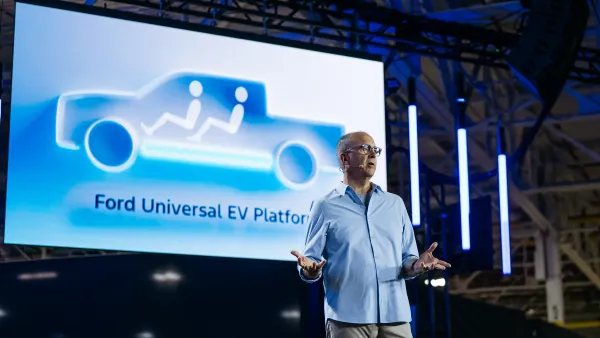General Motors is slashing more than 3,400 jobs, this time targeting workers who make electric vehicles and the batteries that power them, a company spokesperson confirmed to WardsAuto.
The bulk of the cuts will affect about 1,200 workers at the automaker’s Factory Zero facility – the former Detroit-Hamtramck Assembly in Detroit – effective Jan. 5, Kevin Kelly, senior manager, corporate news relations, said in an email.
Another 550 workers also will be laid off effective Jan. 5 at the company’s Ultium Cells plant in Warren, Ohio, Kelly said, who confirmed layoff numbers reported by The Detroit News.
But the workforce reductions don’t stop there. Kelly said that Ultium Cells will temporarily pause production at sites in Spring Hill, Tennessee, and Warren, Ohio, beginning in January. About 850 workers are targeted for temporary layoff in Ohio, while around 700 Tennessee workers will be impacted, per The Detroit News.
Kelly also confirmed that an additional 120 workers will be temporarily laid off at other GM sites that make EV parts.
GM anticipates that production at the Ohio and Tennessee Ultium Cell battery plants will resume by mid-2026.
“During the temporary pause Ultium Cells plans to make upgrades to both facilities to provide greater flexibility,” Kelly said. “Ultium Cells will continue to evaluate and adapt production plans based on evolving market needs.”
Slower-than-expected adoption of electric vehicles in the U.S. as well as the shifting regulatory environment, is driving GM’s EV production shift, according to Kelly. Though he added that the automaker is committed to its U.S. manufacturing footprint.
“We believe our investments and dedication to flexible operations will make GM more resilient and capable of leading through change,” he said.
GM’s latest layoffs follow the company’s decision to eliminate 500 tech positions at operations in Michigan and Georgia.
While GM executives did not discuss workforce reductions during its Q3 earnings call on Oct. 21, CEO Mary Barra said a priority for the automaker was to return the company’s North American operations to its historical 8% to 10% EBIT margins. Part of achieving this goal is managing the company’s fixed costs.















